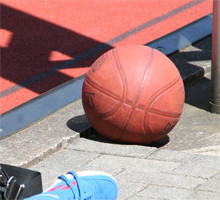ERASMUS+ Take it to the Street
Head of project:
Dr. Karen Petry
IESF staff entrusted with project:
Katrin Bauer
Period of research:
March 2017 – March 2019
Project coordination
International Sport Alliance (ISA)
Consortium Partners:
Deutsche Sporthochschule Köln
GAME Denmark
GAME Lebanon
3X3 Unites
Project goals
Together with local and international partners, ISA, Game Denmark, Game Lebanon and 3X3 Unites, the project aimed to provide young people – primarily from multicultural backgrounds or marginalized areas – with the opportunities to belong, engage and participate within their communities. Young people in Europe, especially within the previous mentioned social sectors, are facing social exclusion within labour markets and education structures. Further, they face exclusion in relation to social rights and opportunities associated with individual development. The omission of these characteristics can be considered counteractive and undermines the goals and hopes of social cohesion within communities. Thus, sport is identified as having unique democratic capabilities that bring about social cohesion and participation of individuals, regardless of their background, religion or socioeconomic status.
However, young people from less advantaged neighbourhoods rarely have access to sports in traditional sports associations and clubs or these traditional forms of sport are not aligned with young peoples’ perception of sport and participation. For this reason, Street Sports has been identified as an innovate and informal sports approach that is replacing traditional means of sport in developing youth led programmes to engage young people from disadvantaged backgrounds, so that they will feel part of the community and society they live in.
In full collaboration with the partners previously mentioned, the project’s aim was to establish decreasing trends associated with traditional sports clubs and the increasing popularity of Street Sports amongst young people from multicultural backgrounds or marginalized areas. Determining these trends will assist in determining best practices and provide recommendations to governments, at local, regional, national and transational levels, as well as for youth work. In sum, the key trends and focus of this project were on Street Sports and youth engagement in correlation with the sport for development indicators of safety, inclusiveness, and supportiveness amongst multicultural groups and marginalized youth.



